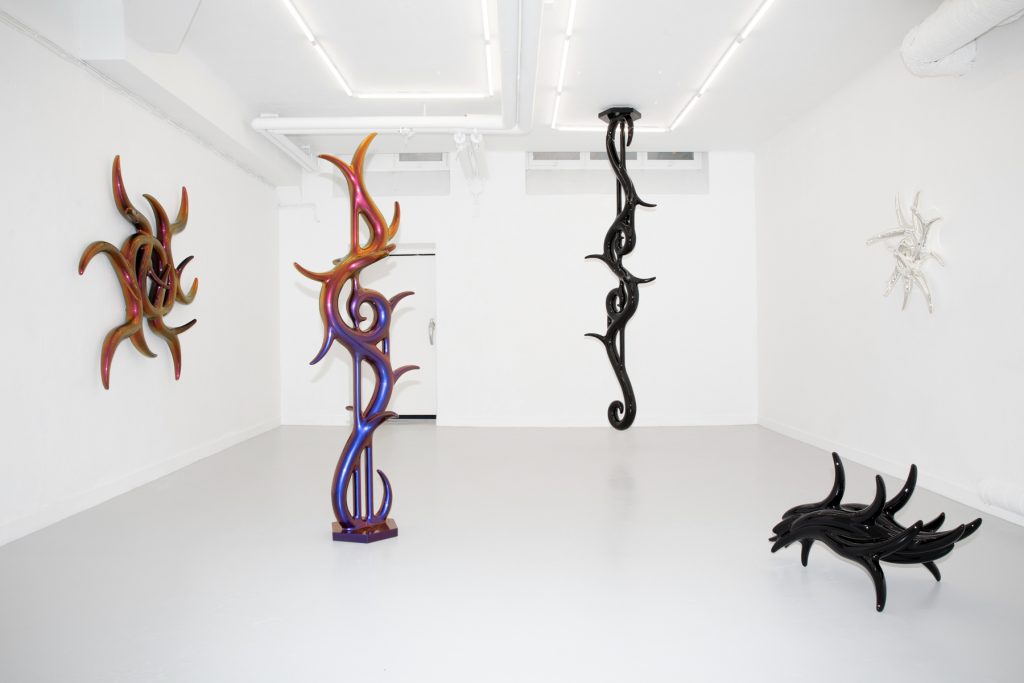Exhibition at Nuda Gallery
Upon losing a limb, the salamander has the remarkable ability to grow it back again. Through specialized blastema cells, the little hybrid animal, spending half of its time in water and the other on land, can regenerate its tissue, bones, muscles, nerves and blood vessels, should it be injured. However, there can be variability in the regenerative process. Factors like the extent of the damage, the species of salamander, and environmental conditions may influence the outcome of regeneration. The salamander’s regenerated body parts could have slightly altered proportions, joint angles, or muscle attachments. As a result, the regrown limb is not identical to the original in every aspect.
In 2019, Fabian Bergmark Näsman created the mold for Fig. 1, the first creature in the series of work that followed. Since then, each subsequent alien figure stems from the original mother mold, crafted from a combination of whole or partial elements assembled in endlessly new configurations. Similar to the regenerative processes of salamanders, each new sculpture diverges from its original form but retains the essence of its source DNA; each new limb traces its origins back to genesis.
In the exhibition Regenesis the spectator looks out at a moon-sun overlap, standing on the surface of a planet, somewhere in the universe. In Daoist cosmology, the interplay between yin and yang is represented by the moon and the sun respectively. The waxing and waning of the moon and the rising and setting of the sun symbolize the cyclical nature of existence and the complementary forces of the universe. The moon is associated with the dark yin energy due to its reflective nature, while the sun correlates with yang, representing illumination and warmth. Within the exhibition, the sun’s rays illuminate the western side, while the eastern side remains in shadows. Despite the opposite forces at play, as dictated by the Dao, every element within the room embodies the principle of oneness. The sun, the moon and all alien beings are marked by their underlying unity and interconnectedness – they stem from a shared origin, a mother mold.

Fig. 47, 2022 – Fig. 40, 2022 – Fig. 64, 2024 – Fig. 60, 2023 – Fig. 65, 2024







